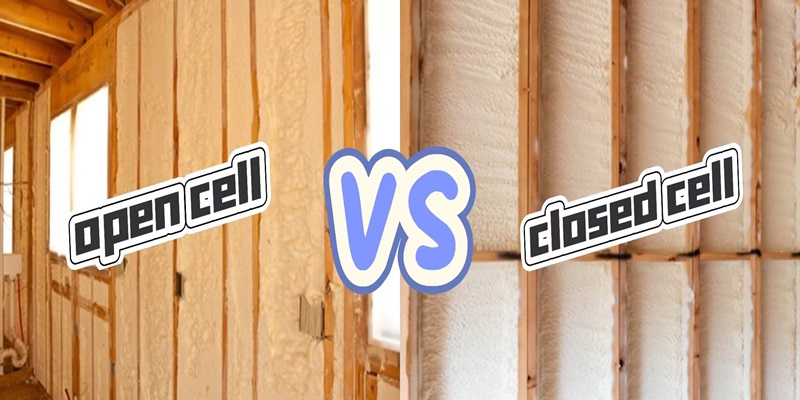Spray foam insulation (SPF) is a versatile and efficient insulation material widely used in residential, commercial, and industrial construction to improve energy efficiency, reduce air leakage, and enhance indoor comfort. It consists of a two-component mixture that is sprayed onto surfaces, where it expands to fill cavities and forms an insulating layer. Spray foam insulation is commonly applied to walls, roofs, floors, attics, and other spaces requiring insulation. It comes in two main types: open-cell and closed-cell foam, each with unique characteristics and benefits.
Types of Spray Foam Insulation
- Open-Cell Foam: Open-cell spray foam is soft, flexible, and permeable, with a lower density and R-value (thermal resistance) than closed-cell foam. The foam structure has small, open pockets that trap air, which provides insulation but also allows moisture vapor to pass through. Open-cell foam is typically used for interior applications, such as walls, attics, and ceilings, where it can help with soundproofing and fill irregular spaces. Despite its lower insulation value, open-cell foam is an affordable option and can expand significantly, providing a good seal for air leaks.
- Closed-Cell Foam: Closed-cell spray foam, on the other hand, is denser and more rigid, with a higher R-value per inch, making it a better insulator. Its cells are completely closed, creating a barrier that resists air and moisture infiltration. Closed-cell foam is ideal for exterior applications and areas requiring high insulation performance, such as roofs, basements, and crawlspaces. Additionally, it adds structural strength to buildings and serves as a moisture and vapor barrier, reducing the risk of mold and mildew growth.
Benefits of Spray Foam Insulation
One of the primary advantages of spray foam insulation is its ability to create an airtight seal, reducing energy loss and improving the energy efficiency of a building. Traditional insulation materials, such as fiberglass or cellulose, can leave gaps or settle over time, allowing air to escape or enter. Spray foam expands to fill every nook and cranny, preventing drafts and lowering heating and cooling costs.
Spray foam insulation also provides soundproofing by absorbing sound waves, making it ideal for homes or buildings where noise reduction is important. Additionally, closed-cell foam acts as a moisture barrier, which helps prevent water infiltration and protects against mold and rot in areas exposed to humidity.
Because of its durability and longevity, spray foam insulation can last for decades without needing replacement, which makes it a cost-effective investment in the long run. It also reduces environmental impact by improving energy efficiency, lowering greenhouse gas emissions from heating and cooling, and contributing to sustainability efforts.
Application Process
Spray foam insulation is applied by mixing two chemical components (polyol resin and isocyanate) that react and expand when sprayed onto a surface using a catalyst. The mixture is applied using a specialized spray gun and the foam quickly expands to form an insulating barrier. This is a fast and effective method of insulation compared to traditional materials.
Proper installation is crucial to ensure the effectiveness of spray foam insulation. It should be performed by trained professionals to achieve uniform coverage and avoid issues such as uneven expansion or improper adhesion.
Conclusion
Spray foam insulation offers numerous benefits, including superior insulation, air sealing, moisture resistance, and durability. Whether for new construction or retrofitting existing structures, it provides a highly effective solution for improving energy efficiency and comfort in homes and commercial buildings. With its growing popularity, spray foam insulation continues to play a vital role in modern, energy-conscious construction practices.
Post time: Jan-22-2025

